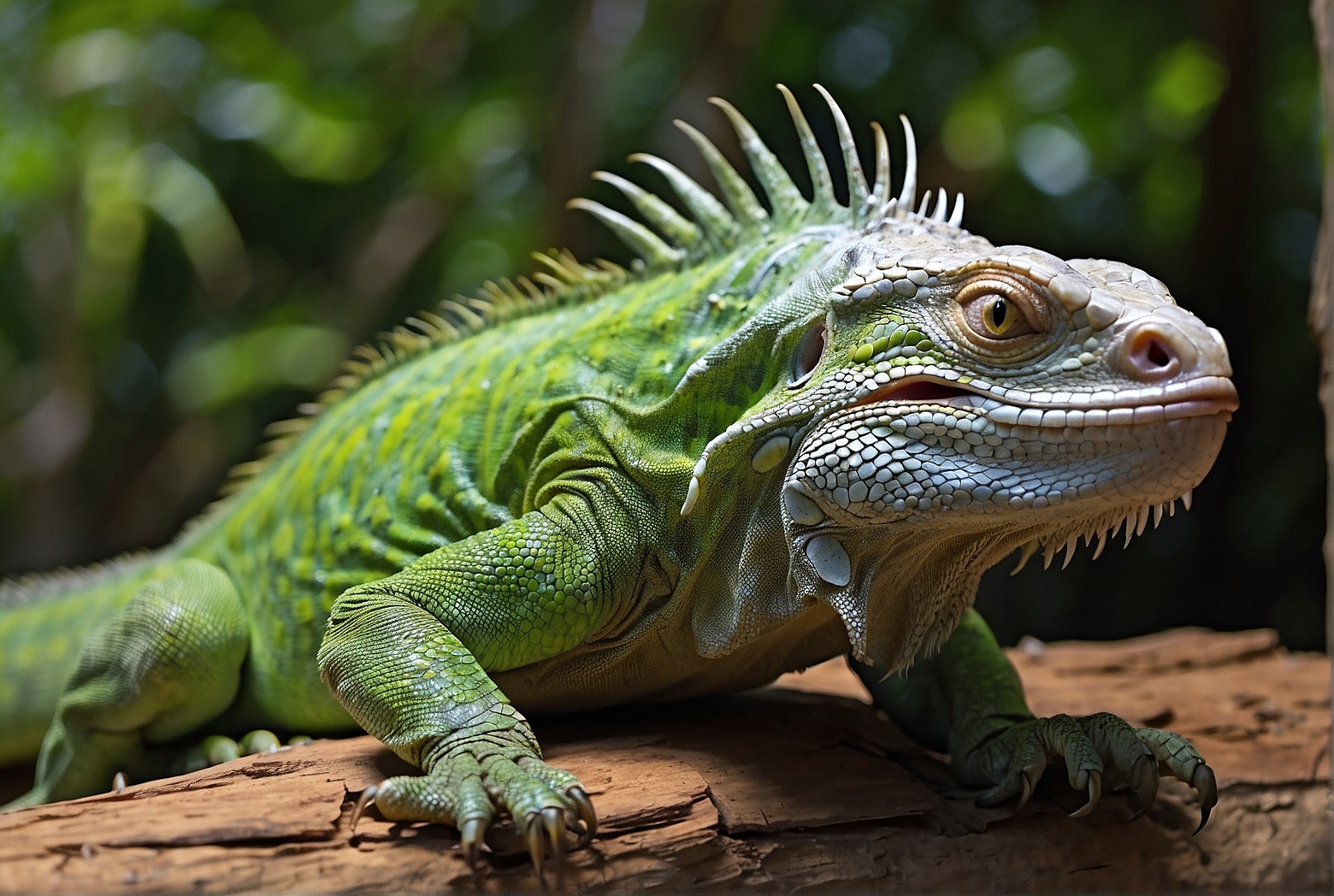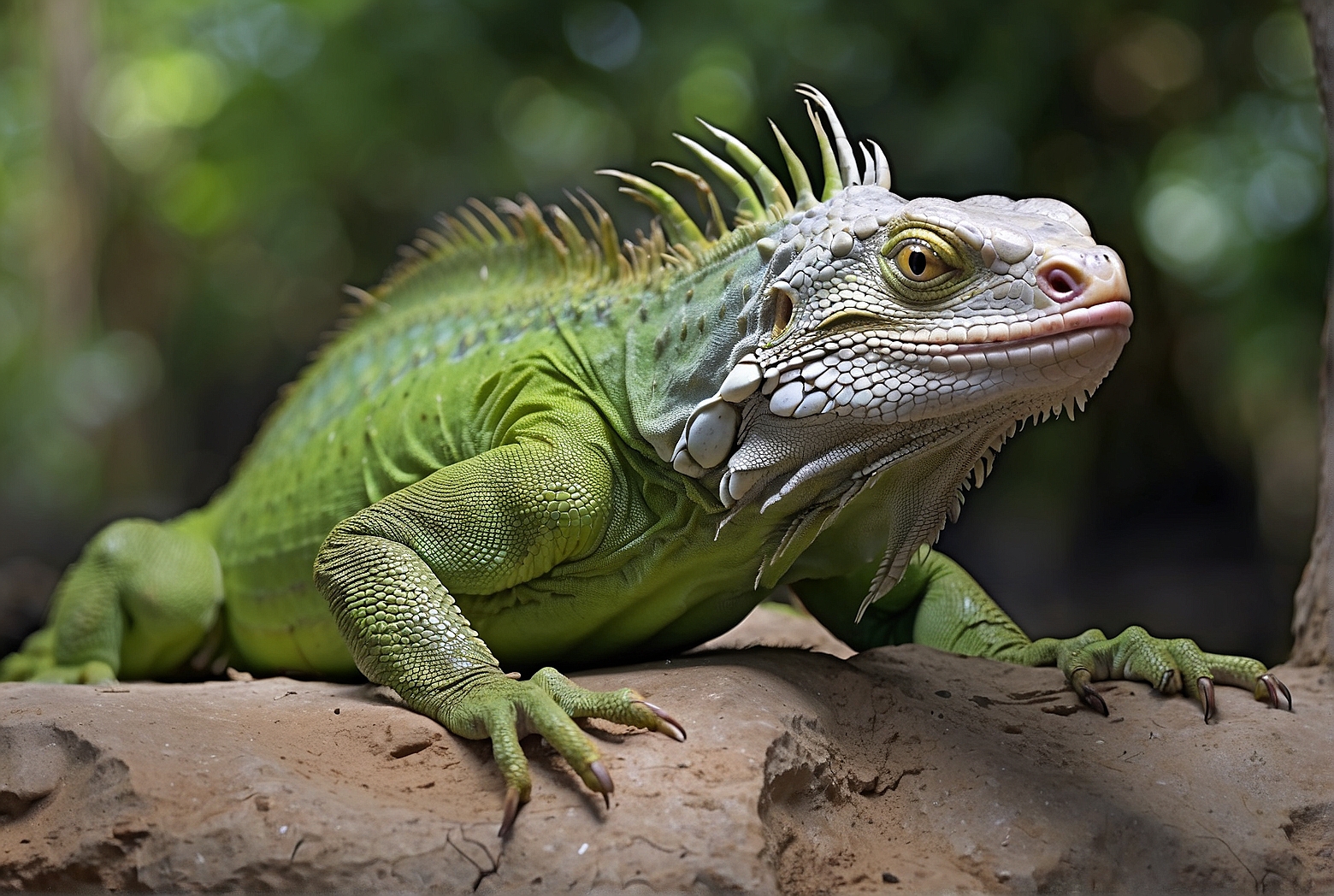Have you ever wondered how long a green iguana can go without eating? Well, it turns out that these fascinating reptiles have quite an impressive ability to survive without food. While their exact time frame may vary, green iguanas can typically go up to two months without consuming any food. This remarkable adaptation is made possible by their slow metabolism and ability to store energy from their previous meals. However, it’s important to note that while they can survive without eating for an extended period, it is not recommended to deprive them of food for such a long time as it can have detrimental effects on their health. Join us as we explore the incredible survival skills of the green iguana and discover more about their unique dietary needs.
Factors Affecting Green Iguana’s Survival Without Eating
Health and Body Condition
When it comes to a green iguana’s ability to survive without eating, their health and body condition play a crucial role. If an iguana is already weak or sick, their ability to withstand prolonged periods without food is significantly reduced. Maintaining good health and body condition through proper nutrition and care is therefore essential for their survival.
Age
The age of a green iguana also influences their ability to survive without eating. Younger iguanas, particularly hatchlings and juveniles, have a higher metabolic rate and energy requirements. As a result, they cannot sustain themselves as long as adult iguanas without food. Adult iguanas, on the other hand, have a slower metabolism and can potentially endure longer periods without eating.
Environmental Conditions
The environmental conditions in which a green iguana finds itself can greatly affect its survival without food. Factors such as temperature and humidity levels can impact an iguana’s metabolic rate and energy expenditure. Cooler temperatures often lead to a reduced metabolic rate, allowing the iguana to conserve energy and survive for longer periods without food.
Signs of Hunger in Green Iguanas
Reduced Activity
One of the noticeable signs of hunger in green iguanas is Reduced activity. When an iguana is hungry, it tends to become less active and may spend more time resting or basking to conserve energy. If you notice your iguana being less active than usual, it could be an indication that it is hungry and not obtaining enough nutrients.
Weight Loss
Weight loss is another sign that a green iguana is experiencing hunger. When an iguana does not eat, it starts utilizing its fat reserves to meet its energy needs. As a result, the iguana gradually loses weight over time. Regular weighing of your iguana can help you monitor any significant weight loss and ensure its well-being.

Behavioral Changes
Hunger can also lead to behavioral changes in green iguanas. They may become more irritable, aggressive, or exhibit unusual feeding behaviors such as scavenging or attempting to eat inedible objects. If you observe such behavioral changes in your iguana, it is essential to address its nutritional needs promptly.
Duration a Green Iguana Can Survive Without Eating
Varies based on Factors
The duration a green iguana can survive without eating varies depending on various factors, including its health, age, and environmental conditions. Generally, a healthy adult green iguana can survive for several weeks to a few months without food if necessary measures are taken to ensure its well-being.
Approximate Timeframes
While the exact timeframes may vary, it is crucial to provide food to a green iguana within reasonable intervals. A hatchling or juvenile iguana may require food more frequently, ranging from daily to every few days. Adult iguanas can typically go without food for longer periods, ranging from a week to several weeks, but this should be avoided whenever possible.
Survival Strategies of Green Iguanas During Food Scarcity
Reduced Metabolic Rate
One survival strategy that green iguanas employ during food scarcity is reducing their metabolic rate. By slowing down their metabolism, iguanas can conserve energy and survive longer without food. This adaptive response allows them to cope with periods of limited food availability, such as during droughts or when food sources are scarce.
Adjusting Behavior and Activity Levels
Another survival strategy is adjusting their behavior and activity levels. When food is scarce, green iguanas may significantly reduce their activity, spending more time resting or basking to conserve energy. They may also alter their foraging behavior, becoming more efficient in searching for and consuming available food sources when they are present.
Water Absorption for Sustenance
Green iguanas are capable of absorbing water from various sources, including through their skin and from the air. During periods without food, they may rely on the absorption of water for sustenance. Proper hydration is crucial for their overall well-being, and access to clean water should always be ensured, even when food is limited.

Dehydration and Its Impact on Green Iguanas
Effects of Water Deficiency
Dehydration can have serious consequences for green iguanas. Without enough water, they may experience lethargy, sunken eyes, dry skin, and changes in behavior. Dehydration can affect their overall health and make them more susceptible to other health issues. It is important to provide a constant supply of fresh water to prevent dehydration, especially during periods of food scarcity.
Survival Limits without Water
While green iguanas have adaptations to survive without food for extended periods, their survival limits without water are far more limited. Without access to water, an iguana’s health can deteriorate rapidly, leading to organ failure and death within a matter of days or even hours. Adequate hydration is crucial for their survival, and dehydration should be avoided at all costs.
Feeding Habits and Adaptations of Green Iguanas
Herbivorous Diet
Green iguanas are herbivores, primarily feeding on a diet consisting of leaves, fruits, flowers, and other plant materials. Their feeding habits and adaptations are specifically suited to extract nutrients from plant matter. Their long, sharp teeth are ideal for tearing leaves, while their specialized gut and fermentation processes enable them to break down tough plant fibers.
Digestive System Adaptations
The digestive system of green iguanas is uniquely adapted to process their herbivorous diet. They have a large cecum, a specialized pouch in their digestive tract, which aids in the fermentation and breakdown of plant material. This adaptation allows them to extract essential nutrients from their plant-based diet efficiently.
Role of Fat Reserves in Green Iguanas’ Survival
Stored Energy Source
Fat reserves play a crucial role in a green iguana’s ability to survive without eating. When they do not have access to food, iguanas can rely on their fat stores as an energy source. These reserves provide the necessary fuel for their bodily functions, allowing them to sustain themselves during periods of food scarcity.
Importance during Food Scarcity
During times of food scarcity, a green iguana’s fat reserves become even more critical for its survival. The utilization of fat reserves helps them maintain essential body functions, including organ function and overall health. Ensuring that a green iguana has sufficient fat reserves through proper nutrition during times of plenty is vital for their survival during periods of food scarcity.
Physiological Changes in Green Iguanas During Starvation
Metabolic Slowdown
As green iguanas starve, their metabolic rate slows down as a survival mechanism. This metabolic slowdown allows them to conserve energy and redirect it towards vital bodily functions. By reducing energy expenditure, the iguana can elongate the time it can survive without food, although prolonged starvation is still detrimental to their health.
Organ Shrinkage
During starvation, green iguanas may experience organ shrinkage due to the breakdown of muscle tissues and the utilization of energy stores. This physiological change is a result of the iguana’s attempt to maintain vital organ functions by utilizing available resources. However, prolonged organ shrinkage can lead to long-term health issues and even organ failure.
Tissue Breakdown
As green iguanas continue to starve, their bodies may start breaking down muscle tissues to fuel essential bodily functions. This breakdown of tissues is a natural response to food scarcity and allows the iguana to sustain itself for a longer period. However, prolonged tissue breakdown can result in muscle wasting, weakness, and other health complications.
Long-term Consequences of Prolonged Starvation
Weakness and Debilitation
Prolonged starvation has severe consequences for green iguanas, leading to weakness and debilitation. As the iguana’s body depletes its energy stores, it becomes increasingly frail and less capable of performing normal activities. The iguana’s weakened state leaves it vulnerable to other health issues and reduces its chances of survival.
Organ Failure
Prolonged starvation can also result in organ failure in green iguanas. As the body continues to utilize its limited resources, critical organs may be compromised, leading to their dysfunction. Organ failure poses a significant threat to the iguana’s life, and without adequate care and nutrition, it can ultimately be fatal.
Death
The ultimate consequence of prolonged starvation is death. If a green iguana does not receive sufficient nourishment over an extended period, its body will no longer be able to maintain essential functions, leading to its demise. Providing regular and proper feeding is crucial in preventing such dire consequences and ensuring the iguana’s overall well-being.
Importance of Regular Feeding in Green Iguanas Care
Maintaining Optimum Health
Regular feeding plays a vital role in maintaining the optimum health of green iguanas. Providing a balanced and nutritious diet helps iguanas meet their energy and nutritional requirements, supporting their immune system and overall well-being. Ensure that their diet consists of leafy greens, vegetables, and occasional fruits to accommodate their herbivorous nature.
Preventing Malnutrition
Regular feeding also helps prevent malnutrition in green iguanas. A well-balanced diet ensures they receive all the essential vitamins, minerals, and nutrients necessary for their growth and development. Malnutrition can lead to weakened immune systems, skeletal disorders, and various other health issues that can significantly impact their quality of life.
Providing Proper Nutrition
Regular feeding ensures green iguanas receive the necessary nutrition for their specific dietary needs. A properly balanced diet supports their digestive system, promotes healthy gut flora, and aids in proper nutrient absorption. It is crucial to provide varied and appropriate food sources to mimic their natural diet and ensure their dietary requirements are met.
In conclusion, a green iguana’s ability to survive without eating depends on various factors such as health, age, and environmental conditions. While they can withstand periods of food scarcity, it is crucial to provide regular and proper feeding to maintain their overall health and prevent malnutrition. Ensuring access to clean water and a balanced diet is essential in promoting the well-being and longevity of these remarkable reptiles.
